Terraform Basics Training Course
Terraform Provisioners
Demo Deploying an EC2 Instance optional
In this lesson, you will learn how to provision a Linux EC2 instance using the AWS Management Console and configure it to serve web content using Nginx. This step-by-step guide is perfect for beginners seeking a hands-on introduction to AWS EC2 deployments.
Access the EC2 service from the AWS Management Console by clicking on the Services tab at the top left.
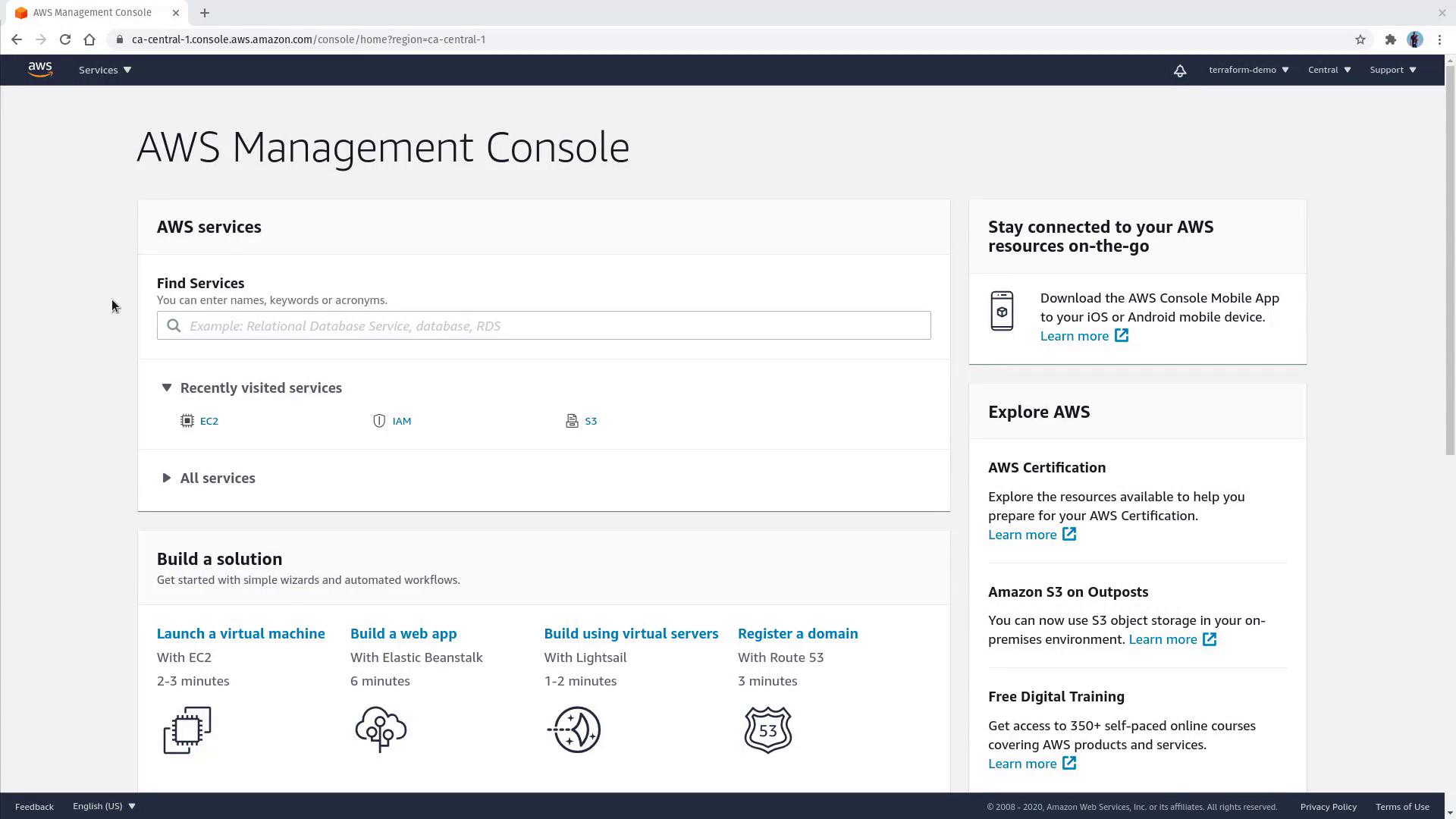
The EC2 service is grouped under the Compute category. Alternatively, you can use the service search bar on the dashboard to quickly locate EC2.
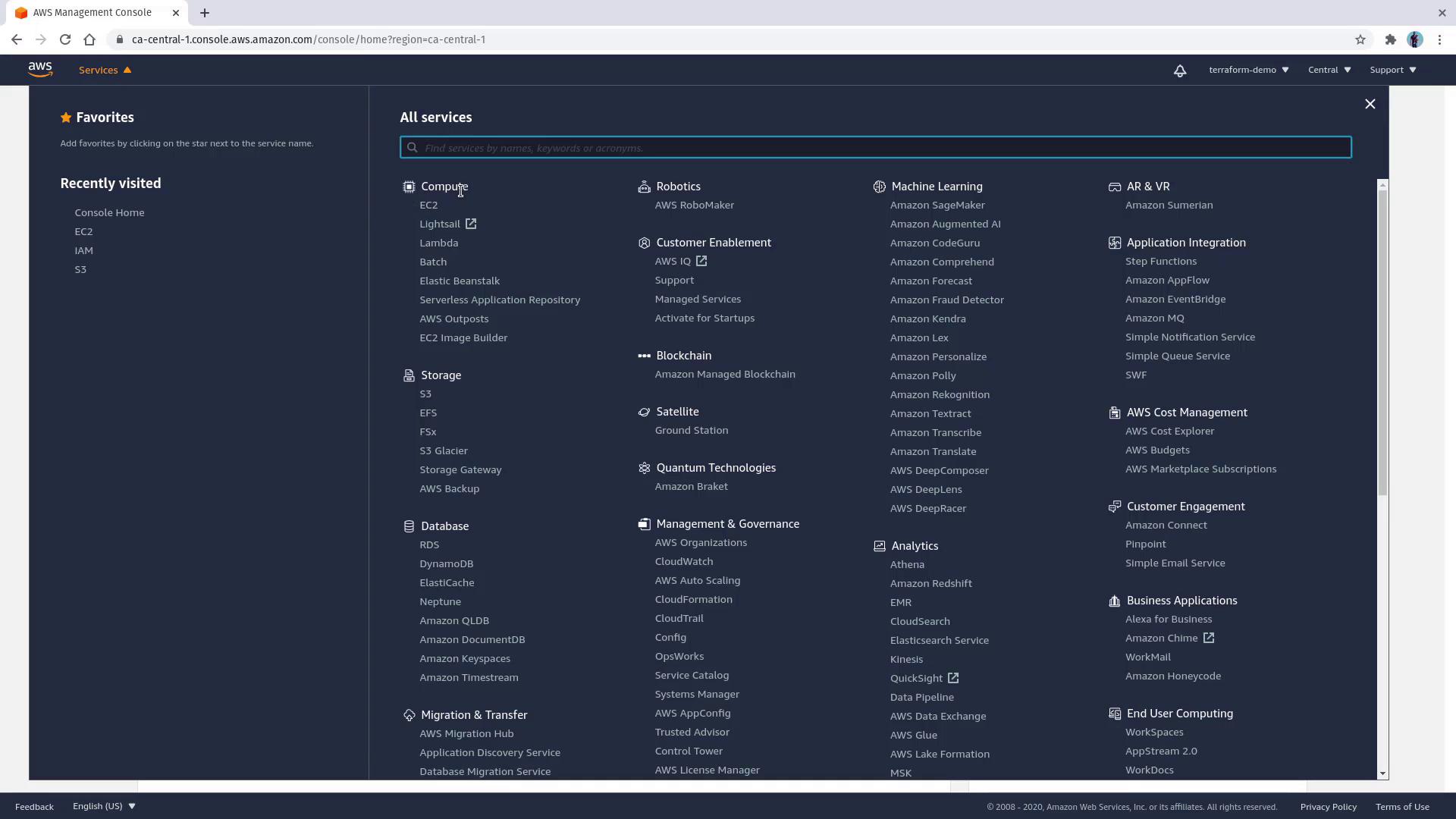
For an even faster start, click the "launch a virtual machine" link located just below the search bar.
Once inside the EC2 console, ensure you are in the central Canada region; this is where your instance will be deployed.
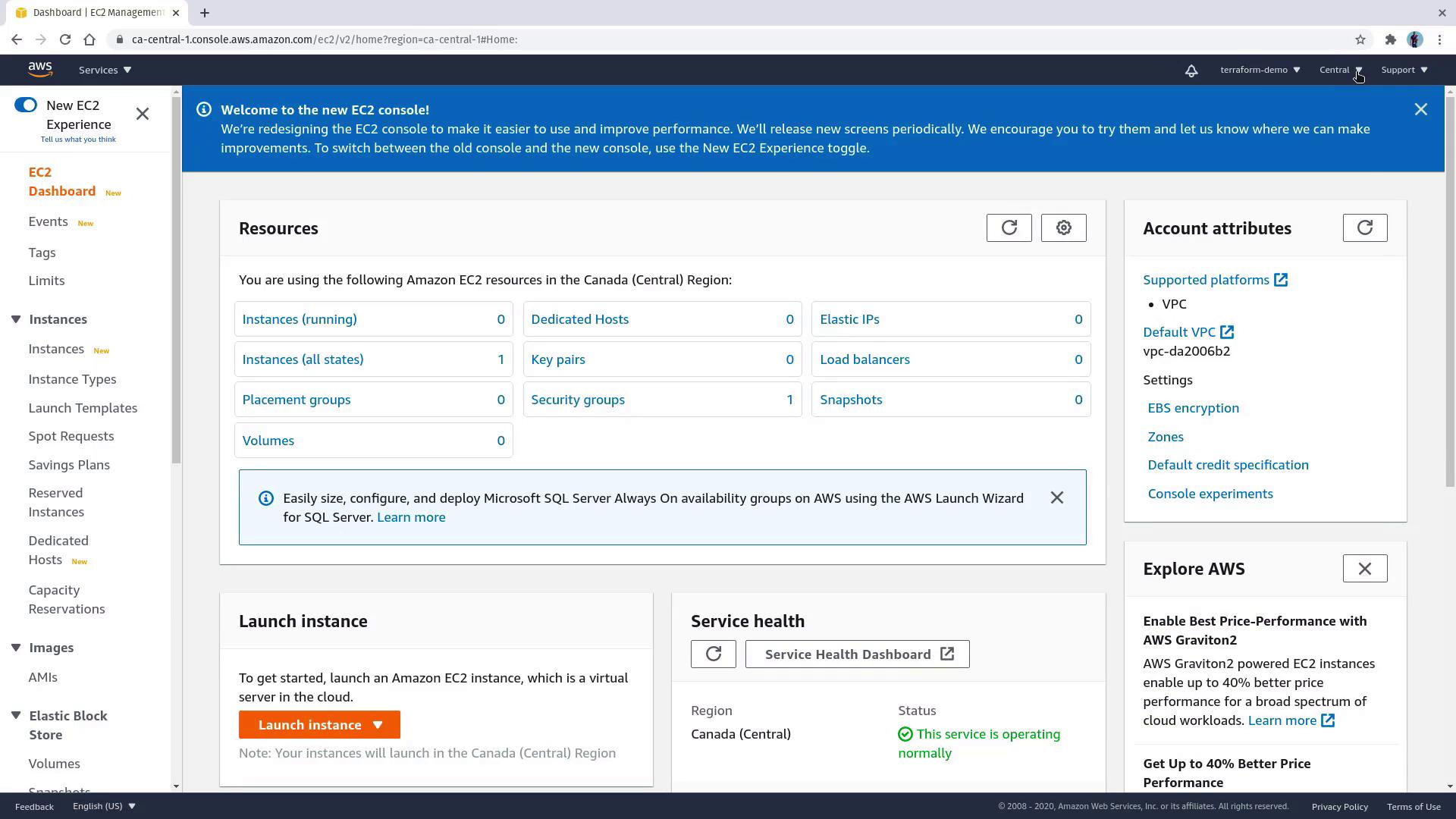
Launching an Instance
To create your EC2 instance, click the Launch Instance button to open the launch wizard.
Step 1: Choose an AMI
Select an Amazon Machine Image (AMI). For this demonstration, we will deploy a web server on Ubuntu. Choose the Ubuntu 20.04 AMI, which is free tier eligible.
Step 2: Choose an Instance Type
Choose an instance type; for example, select t2.micro to remain within the free tier.

The subsequent screens allow you to configure instance parameters. For most settings, the default options are suitable. Use the default VPC for the region and select the default subnet.
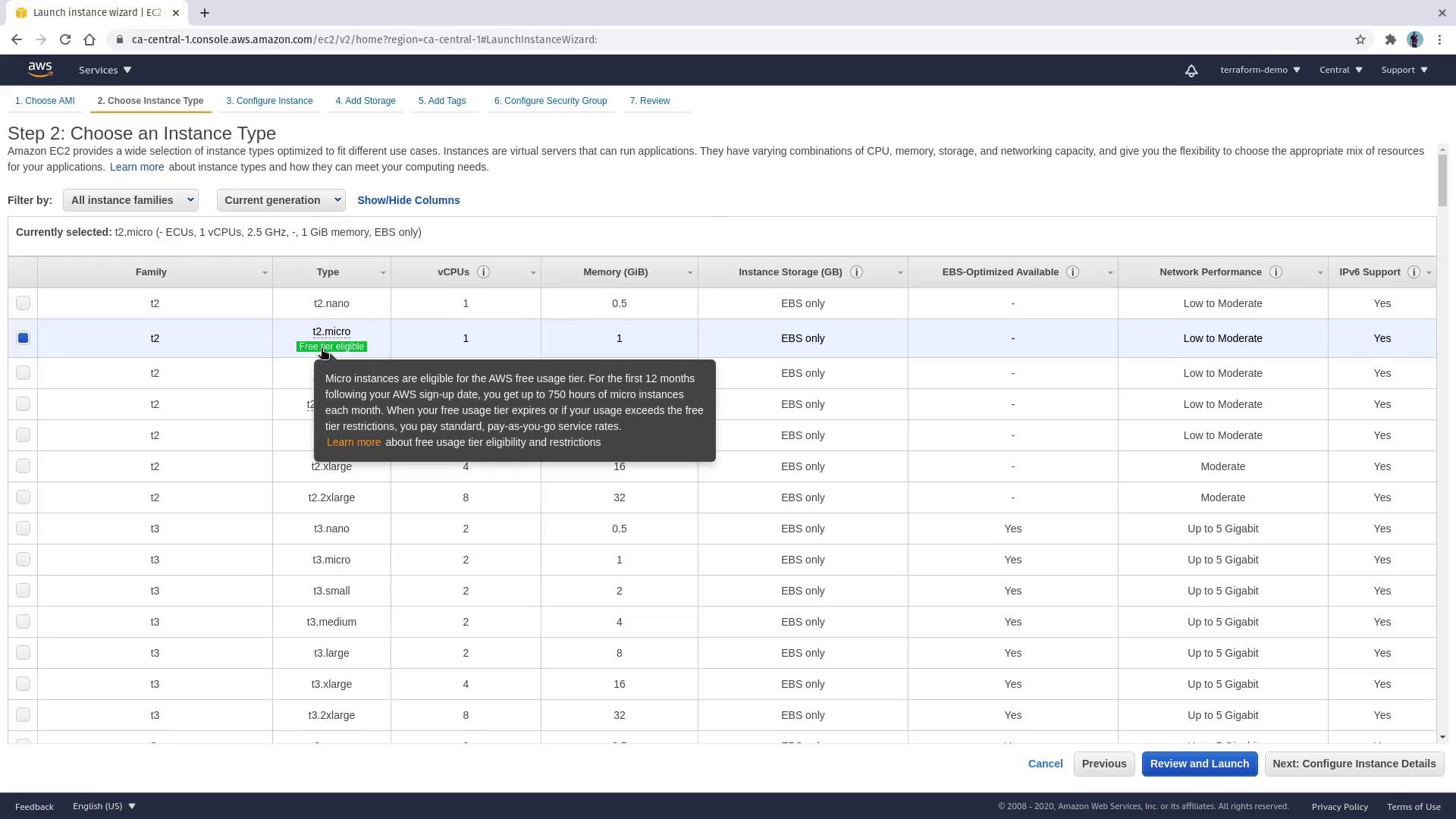
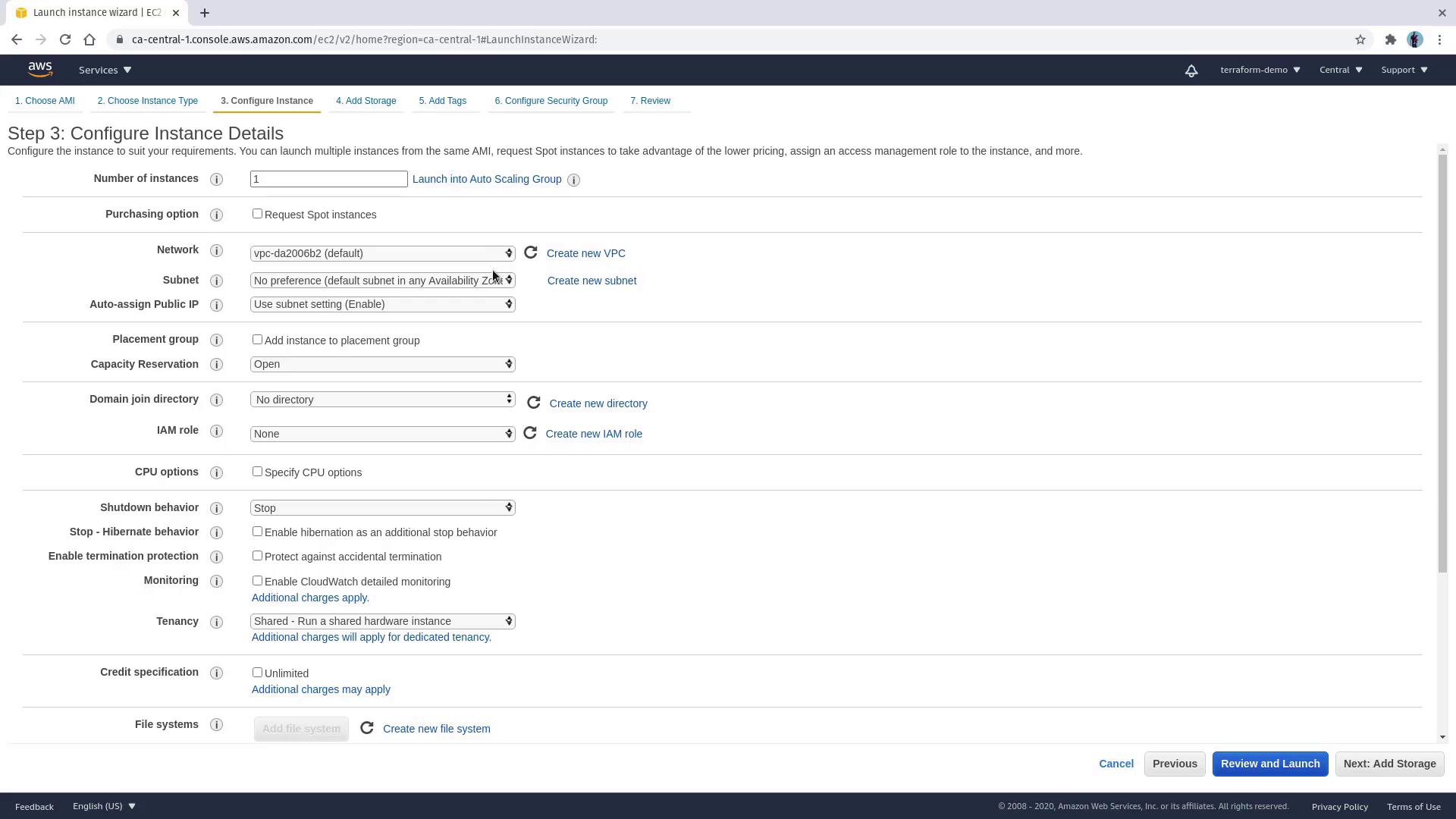
Using User Data for Instance Setup
To serve web content, leverage the EC2 user data feature by pasting the following shell script in the "Advanced Details" section. This script installs and configures Nginx automatically.
Paste the following script:
#!/bin/bash
sudo apt update
sudo apt install nginx -y
sudo systemctl enable nginx
sudo systemctl start nginx
Step 3: Configure Storage
Click Next to proceed to the storage configuration stage. By default, an 8 GB gp2 SSD volume is provisioned as the root partition.
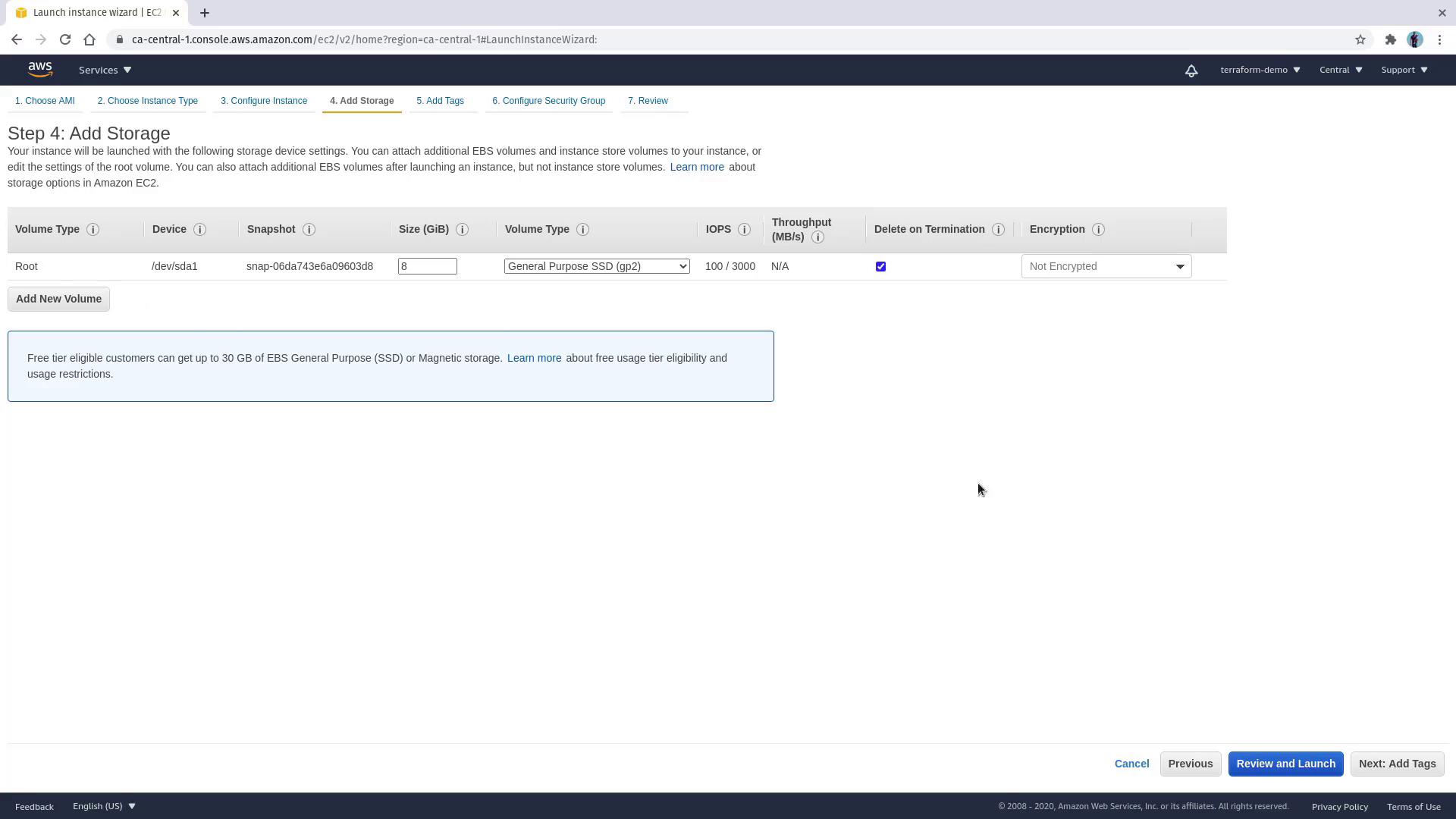
Step 4: Add Tags
For easy identification, add a tag with the key Name and the value web server.
Step 5: Configure Security Group
Set up the security group to allow SSH access. Create a new security group (e.g., "SSH access") and supply a suitable description. Under rule type, select SSH with the default source set to 0.0.0.0/0. Note that while this configuration is convenient for testing, it is not recommended for production environments.
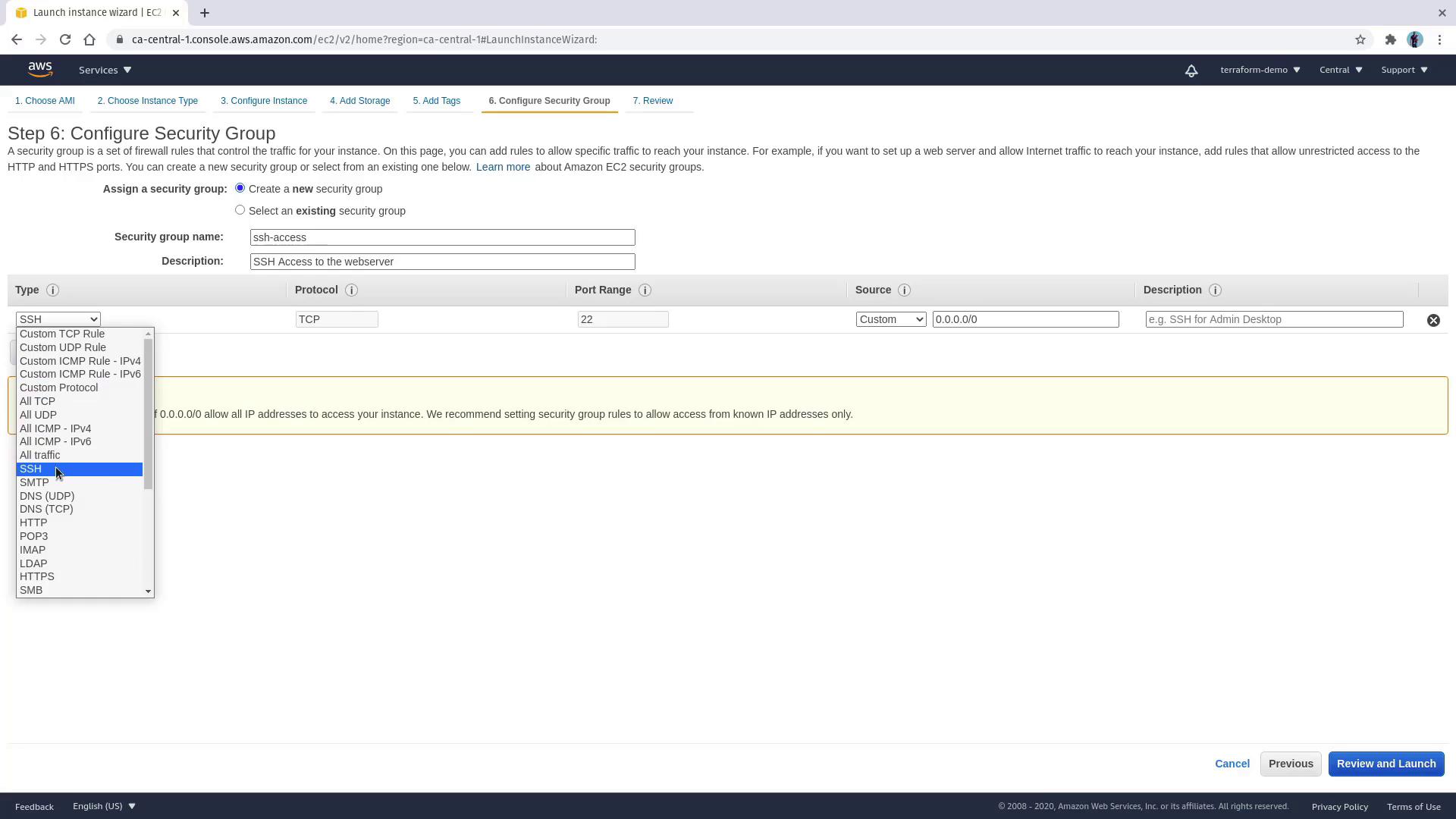
Step 6: Review and Launch
Review your instance configuration and click Launch. You will then be prompted to choose an existing key pair or create a new one. Since no key pair exists in this region, opt to create a new key pair named web and download it. This key pair is essential for SSH authentication.
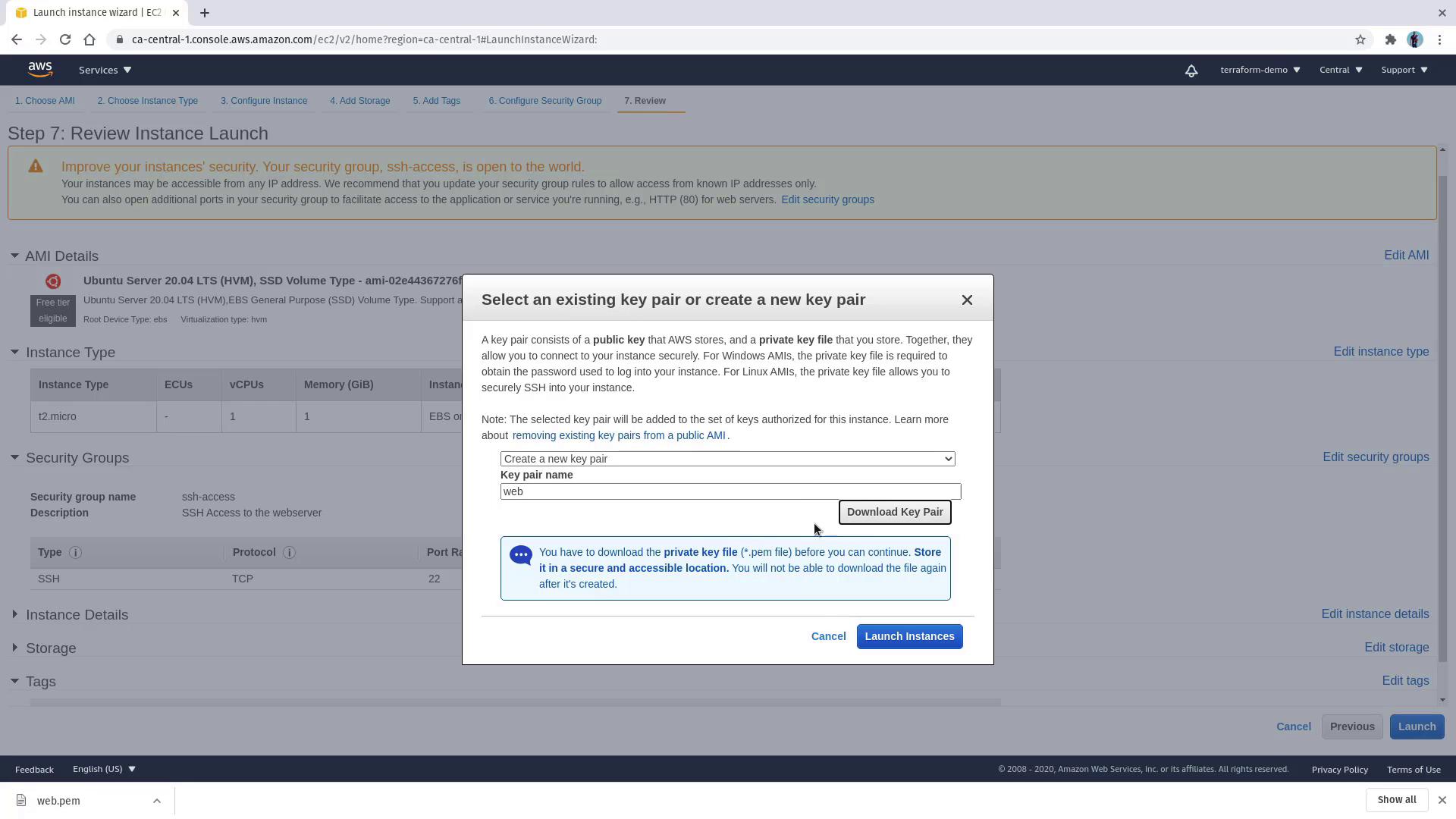
It may take a few minutes for the instance to launch. Click View Instances to monitor its status. Once launched, look for the instance tagged as web server in the running state. Clicking on the instance will display essential details such as the public IP address, VPC, subnet, instance type, AMI ID, security group, and attached EBS volumes.
Connecting via SSH
Open your local terminal to SSH into the instance using the downloaded key pair. Replace <PUBLIC_IP_ADDRESS> with the actual public IP copied from the console.
ssh -i ~/Downloads/web.pem ubuntu@<PUBLIC_IP_ADDRESS>
On your first connection attempt, you might see a warning about the host's authenticity:
The authenticity of host '3.97.9.249 (3.97.9.249)' can't be established.
ECDSA key fingerprint is SHA256:mUC8nA+kT4mFnGx46Yda1CH7LsxGtQtHd6+miQvs6I.
Are you sure you want to continue connecting (yes/no/[fingerprint])? yes
Warning: Permanently added '3.97.9.249' (ECDSA) to the list of known hosts.
@@@@@@@@@@@@@@@@@@@@@@@@@@@@@@@@@@@@@@@@@@@@@@@@@@@@@@@@@@
WARNING: UNPROTECTED PRIVATE KEY FILE!
@@@@@@@@@@@@@@@@@@@@@@@@@@@@@@@@@@@@@@@@@@@@@@@@@@@@@@@@@@
Permissions 0664 for '/home/yourusername/Downloads/web.pem' are too open.
It is required that your private key files are NOT accessible by others.
This private key will be ignored.
Load key "/home/yourusername/Downloads/web.pem": bad permissions
[email protected]: Permission denied (publickey).
Private Key Permissions
If you receive this error about private key file permissions, ensure the key file is restricted so that only the owner can read it. Execute the following command:
chmod 400 ~/Downloads/web.pem
Try connecting again with:
ssh -i ~/Downloads/web.pem ubuntu@<PUBLIC_IP_ADDRESS>
Verifying Nginx Installation
After successfully connecting via SSH, verify that Nginx is running by checking its status:
systemctl status nginx
You should see an output similar to the following, confirming that Nginx is active and running:
● nginx.service - A high performance web server and a reverse proxy server
Loaded: loaded (/lib/systemd/system/nginx.service; enabled; vendor preset: enabled)
Active: active (running) since Thu 2020-11-19 22:14:38 UTC; 2min 45s ago
Docs: man:nginx(8)
Main PID: 2343 (nginx)
Tasks: 2 (limit: 1164)
Memory: 5.2M
CGroup: /system.slice/nginx.service
├─2343 nginx: master process /usr/sbin/nginx -g daemon on; master_process on;
└─2344 nginx: worker process
Nov 19 22:14:38 ip-172-31-18-154 systemd[1]: Starting A high performance web server and a...
Nov 19 22:14:38 ip-172-31-18-154 systemd[1]: Started A high performance web server an...
This verification confirms that Nginx was successfully installed using the user data configuration.
This concludes the lesson on deploying an EC2 instance using the AWS Management Console and setting up Nginx with EC2's user data feature. For further details on AWS deployments, check out AWS EC2 Documentation.
Happy deploying!
Watch Video
Watch video content